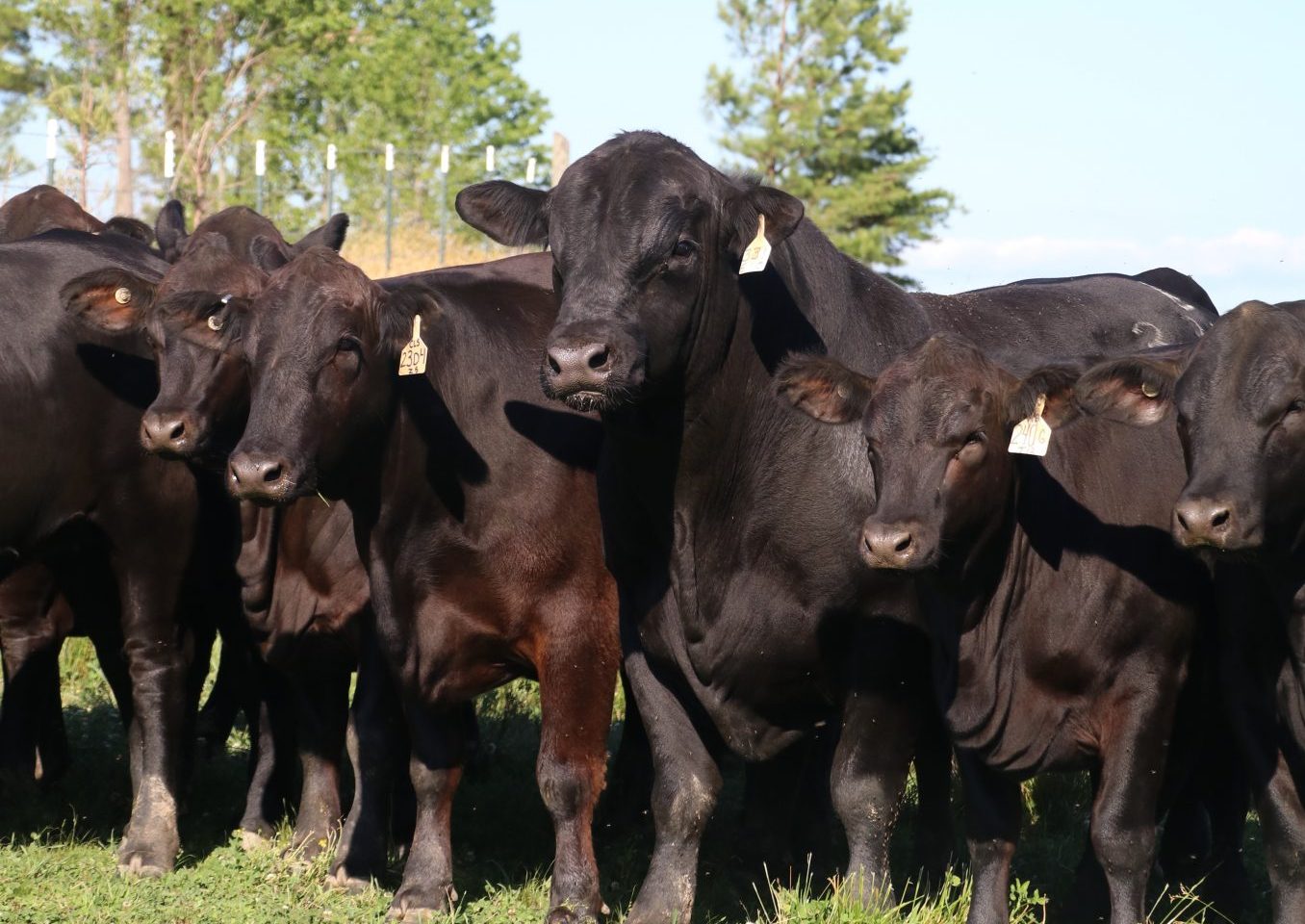Beef

Knowing the carcass quality of a herd is important to attaining Beef Quality Assurance targets for meat value. Learn the methods available for collecting data and the approach that is best for your operation.
Producing a high-quality beef-eating experience for consumers depends on how cattle are raised from conception to consumption. Beef Quality Assurance (BQA) provides producers with best management practices and techniques for producing quality beef.
Among the important, yet sometimes overlooked, measurements are those related to yield grade, quality grade, carcass weight, and ribeye area (table 1). These carcass characteristics will determine the value of the carcass and, ultimately, the eating experience for the consumer. It is essential for producers to know the factors that affect carcass quality and the methods available for collecting this critical data about their herds.
Table 1. Targets for Quality Grade, Yield Grade, and Carcass Weight*
*Adapted from the 2016 National Beef Quality Audit
| Grade/Range | Target | |
|---|---|---|
| Quality Grade | ||
| Prime | 5% or better | |
| Choice | at least 70% | |
| Select | no more than 25% | |
| Standard/Ungraded | 0% | |
| Yield Grade | ||
| 1 | 10% | |
| 2 | 45% | |
| 3 | 40% | |
| 4 | 5% or less | |
| 5 | 0% | |
| Carcass Weight | ||
| less than 600 lb | 0% | |
| 600–800 lb | 20% or less | |
| 801–900 lb | 30% or less | |
| 901–1,050 lb | 50% or more | |
| greater than 1,050 lb | 0% |
The Role of Genetics and Environment
The genetics of individual animals and the overall herd is the foundation of carcass merit and meat quality. The genetic potential of a calf is determined not only by the genetics of the sire and dam but how they complement each other. Genetics alone, however, does not determine the quality of the final product; environment also plays a role.
The environment of a calf can determine how the genetics will be expressed. For example, the rigor of an implant program can potentially decrease the marbling score. But allowing the carcass to hang in a cooler for 14 days will maximize tenderness scores.
Efforts to enhance carcass quality should be part of a total herd improvement program that also focuses on growth and reproduction. This is where collecting benchmark data is important.
Achieving Beef Quality Assurance Targets
Reaching BQA targets for meat quality is difficult, if not impossible, without some measure of benchmarking the carcass quality of the herd. Benchmarking methods include carcass ultrasound or assessment through the Alabama Pasture to Rail program or custom feedlots.
Carcass Ultrasound
Carcass ultrasound is used in breeding cattle to get an indication of their potential to pass on desirable carcass traits. In general, a certified ultrasound technician will take measurements of rump and backfat thickness, ribeye area, and percent intramuscular fat at yearling age in bulls and heifers.
Images are processed and data sent to appropriate breed associations for expected progeny differences (EPD) to be estimated. EPD values can be used in selecting replacement bulls and heifers based on carcass quality among other economically relevant traits. Carcass ultrasound also can be used on growing or finishing cattle, but it is less accurate than actual carcass measurements captured at the processing facility.
Alabama Pasture to Rail Program
Alabama Pasture to Rail is an educational program designed to give beef producers individual animal growth and carcass data. Individually identified cattle that meet program requirements are collected, mixed in with cattle from other farms, and shipped to a feedlot in the High Plains region of the United States.
Ownership of the animals is maintained by the cow-calf producers through the feeding phase. At market weight, cattle are harvested at a packing plant and sold on a carcass grid, and the carcass data is collected. Cattle proceeds and carcass data are returned to the owner and can then be used in making informed management decisions regarding backgrounding, health protocols, and genetics.
Retained Ownership
Some beef producers may want to retain ownership and utilize a custom feedlot to feed and manage the cattle. One downside is that smaller groups of cattle (less than 48,000 pounds) often are difficult to place “with a custom feedlot.
Similar to the Pasture to Rail program, producers using feedlots are liable for the costs of finishing but benefit from getting the carcass proceeds and growth data. Working with the feedlot to market the animals, cattle are either sold live or sold on a carcass grid. Carcass data is collected after the animals are harvested and cattle proceeds and carcass data are returned to the owner. This method can provide the carcass and growth data that producers need to make informed management decisions.
After collecting data for as little as one year, you can begin to characterize the genetic base of your herd. Depending on the amount of data collected, breeding decisions on real data can be made. With each additional year of data, the accuracy of your decisions will increase. Your ability to meet BQA targets will improve as you maintain proper reproduction, preweaning growth, and maternal targets of the herd.
Download a PDF of Alabama Beef Quality Assurance: Benchmarking for Quality, ANR-1286.


